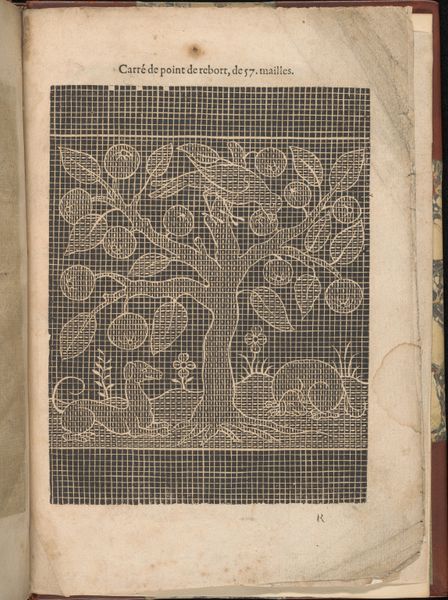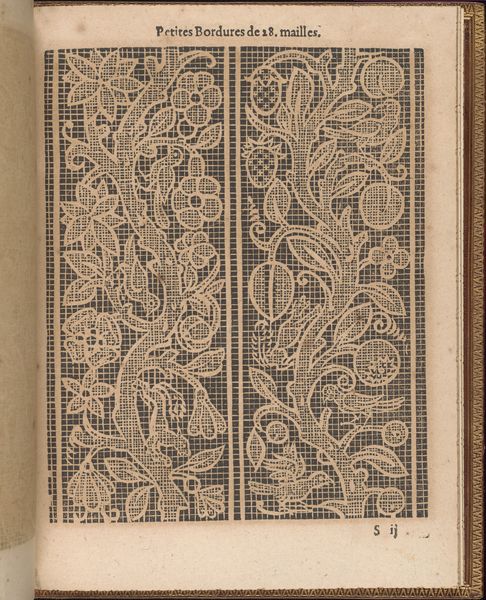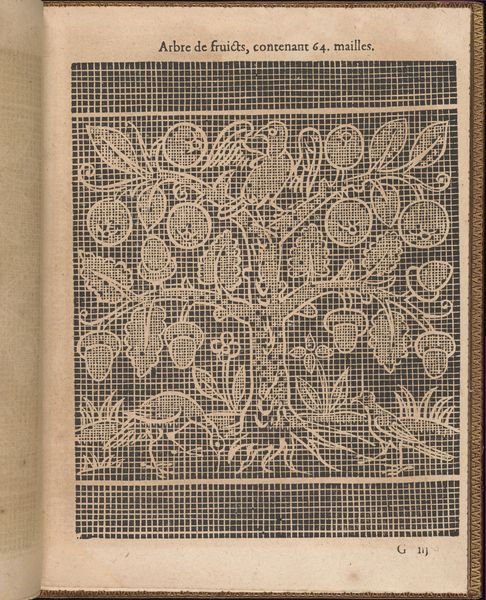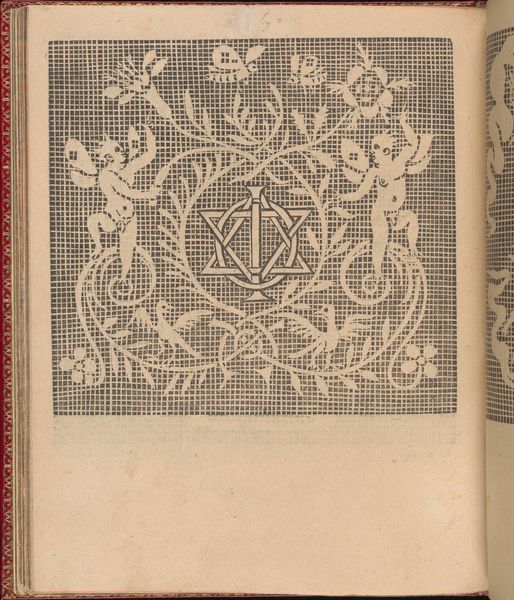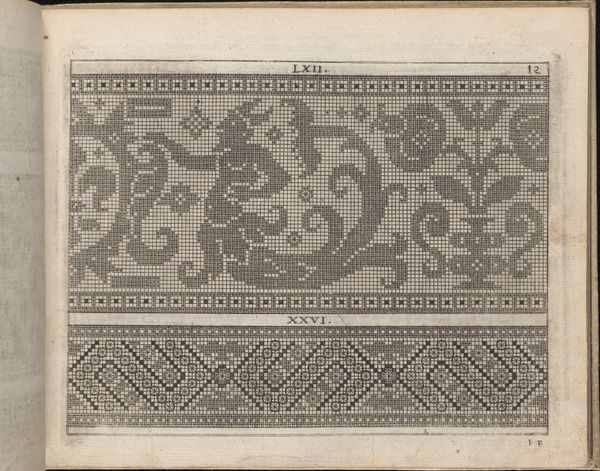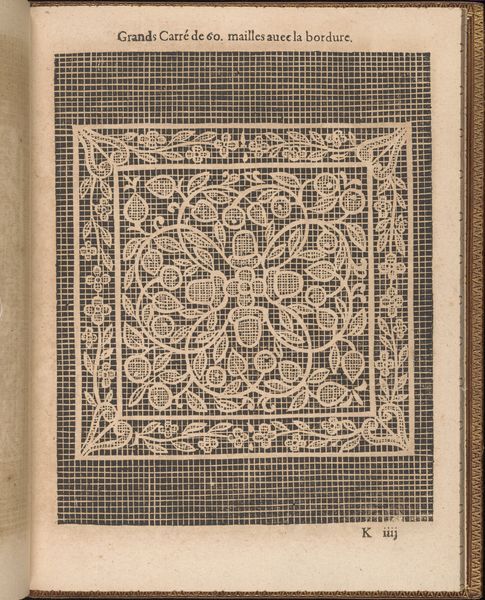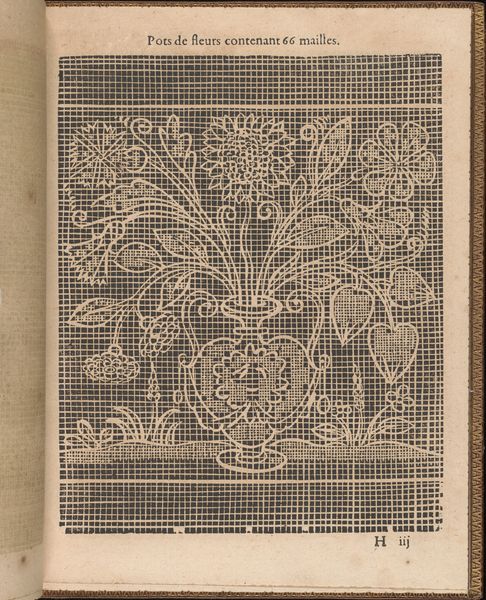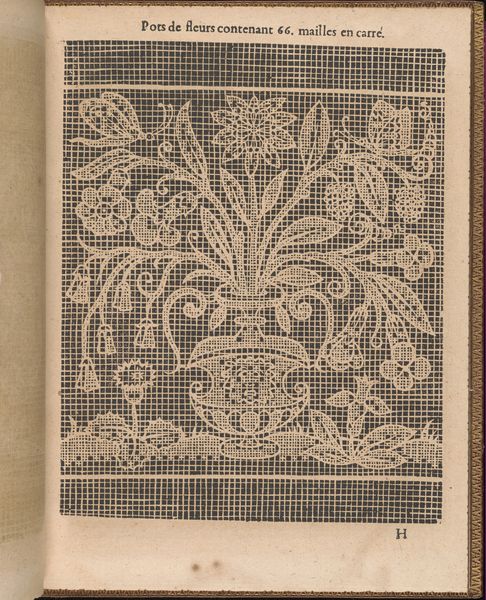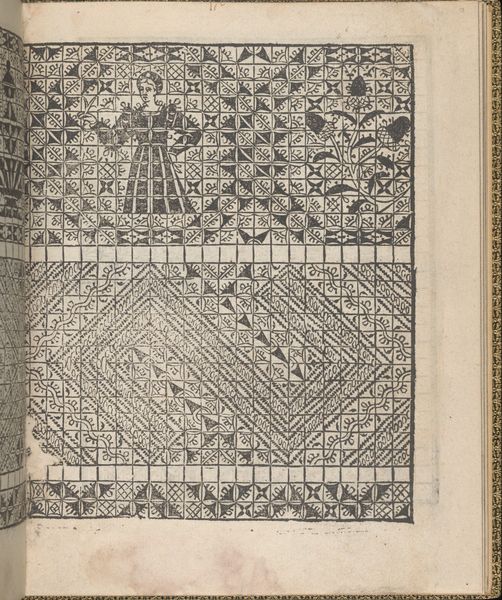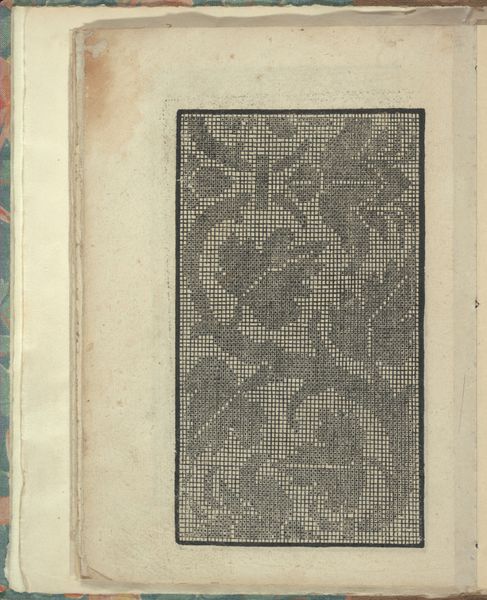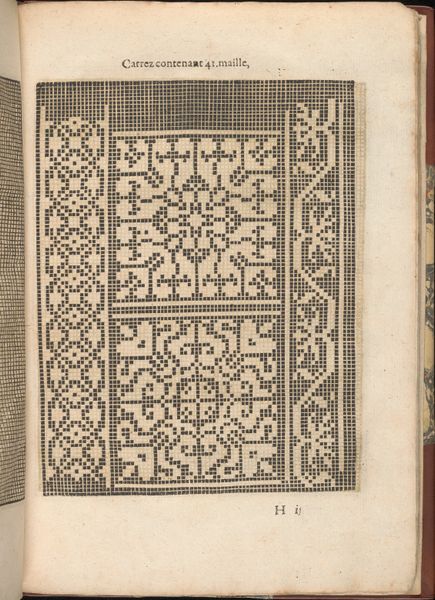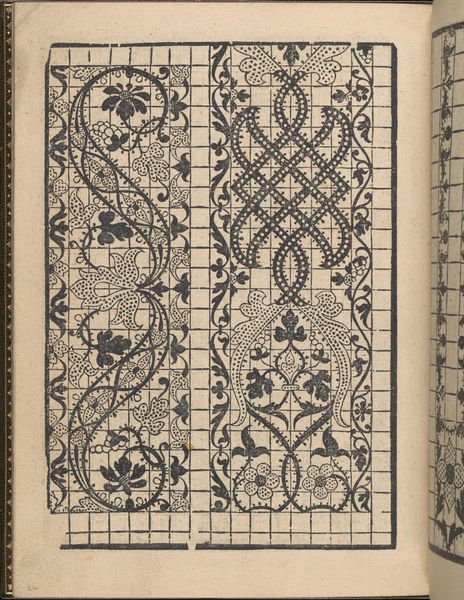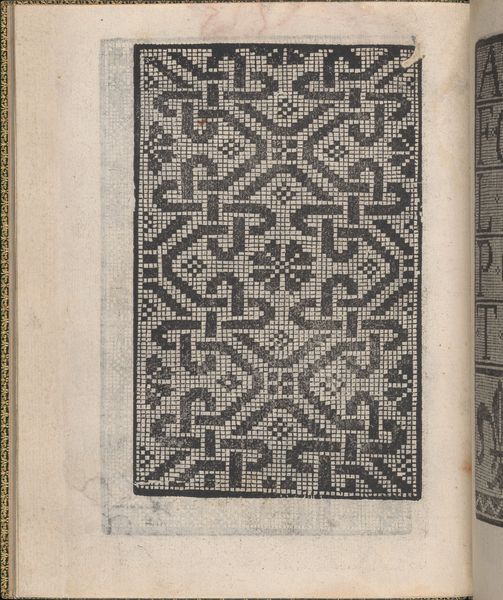
Les Secondes Oeuvres, et Subtiles Inventions De Lingerie du Seigneur Federic de Vinciolo Venitien, page 62 (recto) 1603
0:00
0:00
drawing, ornament, print, paper, ink, woodcut
#
drawing
#
ornament
#
ink paper printed
# print
#
book
#
sketch book
#
bird
#
flower
#
paper
#
11_renaissance
#
ink
#
woodcut
Dimensions: Overall: 9 7/16 x 6 1/2 in. (24 x 16.5 cm)
Copyright: Public Domain
Curator: Looking at this delicate design, one might not immediately recognize its historical impact. What do you see, stepping into it for the first time? Editor: It strikes me as intricate yet restrained. There’s a definite sense of contained energy, like a tightly woven narrative waiting to unravel. Almost like a page from a herbalist’s handbook. Curator: Quite right! This is page 62 from "Les Secondes Oeuvres," a book of embroidery patterns published in 1603 by Federico de Vinciolo. Specifically, this page offers instructions for cutwork lace, a technique popular during the Renaissance. Editor: So, beyond its aesthetic appeal, this pattern also signifies something of immense value. These patterns dictated how women, usually, interacted with high society, expressing status and wealth through ornamentation of clothing and household fabrics. Can you speak about the choice of ink on paper? Curator: The selection of ink and paper as primary materials reflects the economic realities of disseminating design in the early 17th century. The woodcut printing process allowed for the relatively efficient production of patterns, making these designs more accessible to a broader clientele eager to engage in lacework. The choice democratizes design by shifting it away from unique commissions to mass production. Editor: Thinking about the wider implications, consider the politics of lacemaking itself. The activity of constructing lace by hand underscores the intricate and repetitive labour of women while simultaneously providing a creative outlet for them in contexts that might otherwise feel restrictive. Vinciolo offers patterns but these could be altered and become avenues for some measure of agency and self-expression. Curator: Exactly! And each print from the book can serve as a means to explore both the prescribed societal roles of women during the period and the subversive potential inherent in acts of creativity and resistance. Editor: Looking at the delicate floral and animal motifs incorporated into the lace pattern – I note a bird prominently featured – I'm also struck by how seemingly innocuous these details are. Birds in the early modern imagination signify freedom and movement. It hints at something almost utopian: decoration intertwined with self-possession. What are your thoughts? Curator: That's such a thoughtful observation. These elements are not mere embellishments; they offer insight into the socio-economic conditions that facilitated both the production of these patterns and their eventual assimilation by those who were making them. This bird motif becomes more than decorative; it morphs into a symbol of potential within defined constraints. Editor: For me, this piece shows us that even within ornamentation and design there exists potential for complex social analysis. By understanding what informs patterns of living we may uncover forgotten stories in design. Curator: Indeed. De Vinciolo’s patterns open up new ways to perceive production and the subtle power that material culture had at the turn of the 17th century.
Comments
No comments
Be the first to comment and join the conversation on the ultimate creative platform.
